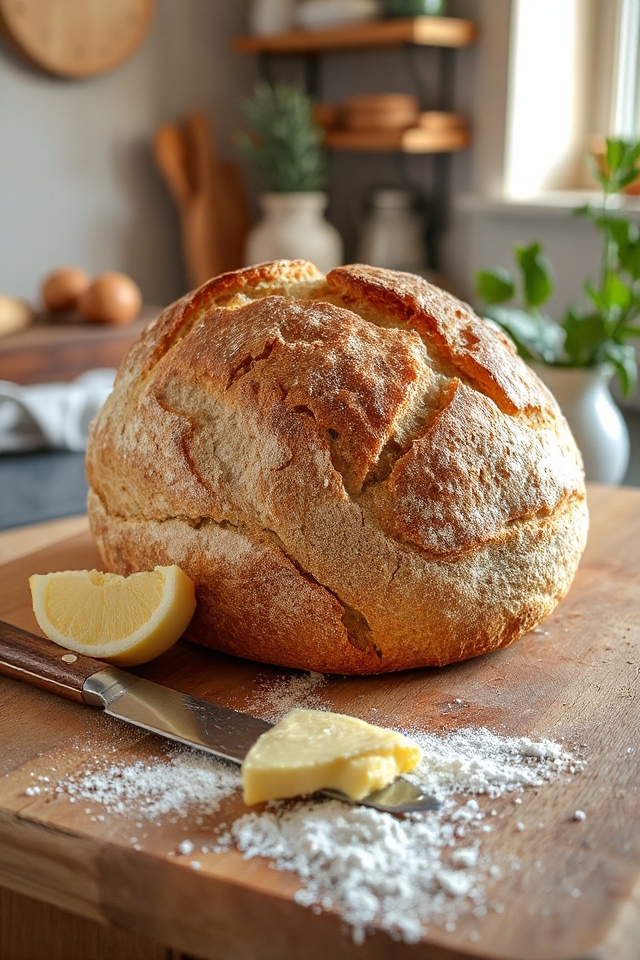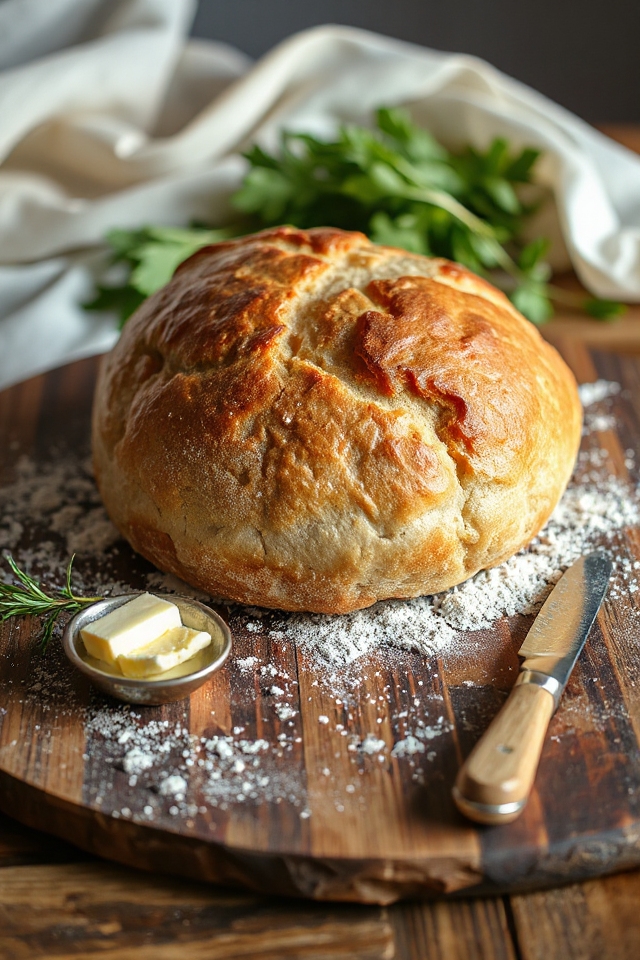Why You’ll Love This Wholemeal Bread Recipe
When you take your first bite of this wholemeal bread, you’ll immediately appreciate its rich, hearty flavor and satisfying texture.
I love how it’s not just a loaf; it’s a warm hug on a plate. The aroma fills my kitchen, inviting everyone to gather around.
It’s versatile, too—perfect for sandwiches or simply slathered with butter. The best part? Knowing I made it from scratch adds to the joy.
It’s nourishing, wholesome, and feels like a treat. Trust me, once you try this recipe, you’ll find it hard to go back to store-bought bread. You’ll be hooked!
Ingredients of Wholemeal Bread
When it comes to whipping up a delicious loaf of wholemeal bread, the ingredients are what set the stage for success. You won’t need anything too fancy or hard to find; most of these items are likely already in your pantry.
Simple, wholesome ingredients come together to create a bread that’s not just tasty but also nourishing. So, let’s gather what we need to get started on this delightful baking adventure.
Here’s what you’ll need for the wholemeal bread recipe:
- 600 g wholemeal flour (plus a little extra for dusting)
- 1 teaspoon salt
- 1 teaspoon sugar
- 4 g dried yeast
- 400 ml water (hand-hot)
- 30 g butter (melted)
Now, you might be wondering about some of these ingredients. For instance, wholemeal flour is a star player here, packed with nutrients and a lovely nutty flavor that white flour just can’t match.
If you want to add a little twist, try experimenting with different types of flour or even tossing in some seeds for added texture. And that dried yeast? It’s like magic—it helps the bread rise and become fluffy.
Just make sure it’s fresh; otherwise, you might end up with a loaf that’s more brick than bread. But hey, even if things don’t go perfectly, remember that every baking experience is a chance to learn, and there’s always toast!
How to Make Wholemeal Bread

Alright, let’s explore the delightful process of making your very own wholemeal bread. First things first, you’ll want to grab your 600 g of wholemeal flour, and while you’re at it, get a little extra for dusting later.
In a large bowl, sift together the flour along with 1 teaspoon of salt, 1 teaspoon of sugar, and 4 g of dried yeast. This little step helps to aerate the flour and mix everything nicely—think of it as giving your bread a good start.
Once that’s done, it’s time to bring the magic in. Pour 400 ml of hand-hot water into the mix, followed by 30 g of melted butter. The butter adds richness, and who doesn’t love a bit of buttery goodness?
Now, here comes the fun part—get your hands in there and mix everything until you form a dough. It might feel a bit sticky at first, but that’s normal! Don’t worry if you need to add a touch more water; the dough should be soft and pliable.
Once it’s all together, transfer that lovely mass onto a floured work surface and knead it for about 10-15 minutes. It’s a bit of a workout, but your arms will thank you later. Knead it until it’s smooth and elastic, like a soft pillow.
After you’re done, pop the dough into a greased bowl, cover it with a clean, damp tea towel, and let it rise in a warm place for about two hours. This is where the magic happens—watch it puff up like a balloon!
Once your dough has risen, it’s time to shape it. Roll it into a long sausage-like shape, about twice the length of your buttered 2 lb loaf tin. Flatten it a bit, then fold it into thirds like you’re tucking it in for a cozy nap.
Place it seam-side down in the tin, press down the edges, and sprinkle a generous dusting of flour on top. Cover it again with that damp tea towel and let it rise for another 30-40 minutes while you preheat your oven to gas mark 6 (200°C/400°F).
After the second rise, bake it in the oven for about 40 minutes. If it sounds hollow when you tap the bottom, you’ve done it! For that perfect crust, flip it upside down and pop it back in the oven for another 5-10 minutes.
Once it’s done, let it cool on a wire rack, and there you have it—beautiful, homemade wholemeal bread. Just try not to eat the whole loaf in one sitting!
Wholemeal Bread Substitutions & Variations
After enjoying the process of making wholemeal bread, you might be curious about how to mix things up a bit.
I love experimenting with different flours, like spelt or rye, to add unique flavors. You can also incorporate seeds, such as sunflower or pumpkin, for extra crunch and nutrition.
If you’re feeling adventurous, try adding herbs or spices, like rosemary or cinnamon, to elevate your bread. For a sweeter twist, consider folding in dried fruits or nuts.
Each variation brings a delightful surprise, making every loaf an exciting experience. So, don’t hesitate to get creative with your ingredients!
Additional Tips & Notes
To guarantee your wholemeal bread turns out perfectly, I recommend paying attention to the dough’s consistency throughout the process. It should be soft and slightly sticky—don’t be afraid to add a bit more water if needed.
While kneading, feel for that smooth texture; it’s key for a good rise. Make sure your rising environment is warm, as that helps activate the yeast.
If you want a crustier loaf, consider placing a tray of water in the oven while baking.
Finally, let the bread cool completely on a wire rack; this prevents sogginess and helps maintain its texture. Enjoy your baking!
